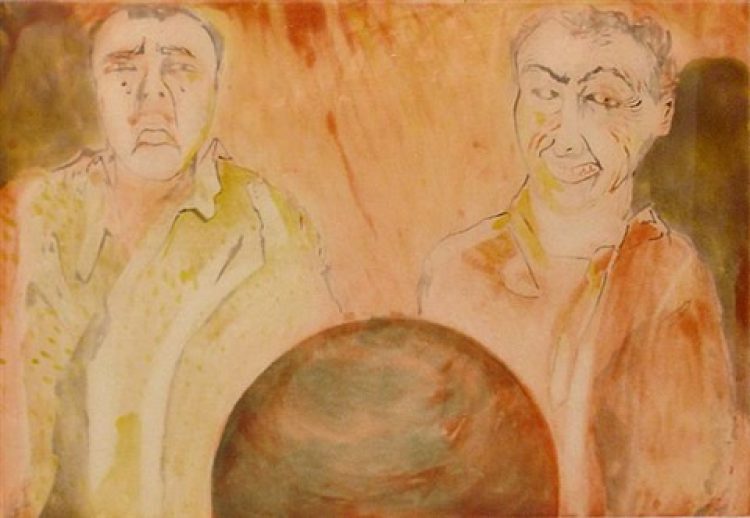
About this Work
About the Artist
Italian
b. 1952 NaplesFrancesco Clemente was born in Naples, Italy, in 1952. After an early academic background in classical languages and literature, he briefly enrolled as an architecture student at the University of Rome, in 1970. Leaving school before completing the program, he focused instead on art.Throughout the 1970s, he produced works on paper, featuring what would become his signature subjects: the human form, particularly women’s bodies; his own image; sexuality; myth and spirituality; non-Western symbols; and dreamlike visions. Clemente’s participation in the 1980 Venice Biennale brought him international attention. He rapidly became seen as one of the leaders of the “return to figuration,” dubbed the Transavanguardia in Italy (by art critic Achille Bonito Oliva) and Neo-Expressionism in the United States, though Clemente himself was uncomfortable with such labels. In 1981 Clemente moved to New York City. He has often engaged in collaborations, both in India with local craftsmen, and in New York with artists Jean-Michel Basquiat and Andy Warhol, among others. He has published many works in conjunction with poets, including John Wieners, Allen Ginsberg, Robert Creeley, and Rene Ricard. Clemente’s art has been shown in numerous solo and group exhibitions. Retrospectives have been organized by the Sezon Museum of Art in Tokyo (1994), Solomon R. Guggenheim Museum (1999), Museo Archeologico Nazionale di Napoli (2002–03), and Irish Museum of Modern Art in Dublin (2004). Clemente continues to divide his time between New York, Madras, and Rome.
b. 1952 NaplesFrancesco Clemente was born in Naples, Italy, in 1952. After an early academic background in classical languages and literature, he briefly enrolled as an architecture student at the University of Rome, in 1970. Leaving school before completing the program, he focused instead on art.Throughout the 1970s, he produced works on paper, featuring what would become his signature subjects: the human form, particularly women’s bodies; his own image; sexuality; myth and spirituality; non-Western symbols; and dreamlike visions. Clemente’s participation in the 1980 Venice Biennale brought him international attention. He rapidly became seen as one of the leaders of the “return to figuration,” dubbed the Transavanguardia in Italy (by art critic Achille Bonito Oliva) and Neo-Expressionism in the United States, though Clemente himself was uncomfortable with such labels. In 1981 Clemente moved to New York City. He has often engaged in collaborations, both in India with local craftsmen, and in New York with artists Jean-Michel Basquiat and Andy Warhol, among others. He has published many works in conjunction with poets, including John Wieners, Allen Ginsberg, Robert Creeley, and Rene Ricard. Clemente’s art has been shown in numerous solo and group exhibitions. Retrospectives have been organized by the Sezon Museum of Art in Tokyo (1994), Solomon R. Guggenheim Museum (1999), Museo Archeologico Nazionale di Napoli (2002–03), and Irish Museum of Modern Art in Dublin (2004). Clemente continues to divide his time between New York, Madras, and Rome.
